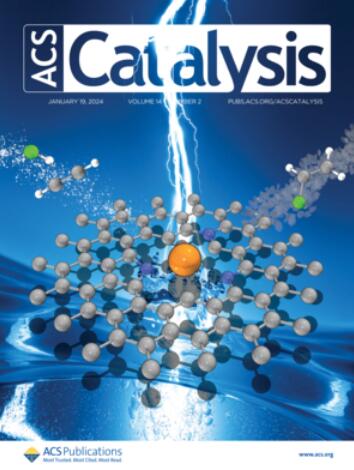Hydrogen Peroxide Production with Photocatalysts Based on Carbon Nitride: Evaluation Criteria, Reaction Mechanism, Improvement Scheme, and Development Opportunity
IF 11.3
1区 化学
Q1 CHEMISTRY, PHYSICAL
引用次数: 0
Abstract
Hydrogen peroxide (H2O2), an ecofriendly oxidant, is extensively employed in wastewater treatment, pulp bleaching, and chemical synthesis. Photocatalytic 2e– oxygen reduction reaction (2e– ORR) to H2O2 has emerged as a renewable strategy for solar-to-chemical energy conversion. Carbon nitride (CN) is a promising candidate for producing H2O2 due to its unique optical properties and electronic structure. However, the ambiguity of the reaction mechanism still limits the development of photocatalytic H2O2 production because of the complexity of the reaction active sites. Previous research on the reaction mechanism was not deep enough, leading to the actual role of reaction sites being relatively indistinct in the photocatalytic process. This Review systematically explores the intrinsic mechanism of enhancing the performance of photocatalysts, with a focus on analyzing the action mechanism of multiple types of active sites (such as defect sites, doping sites, surface metal sites, etc.) induced by different modification strategies in 2e– ORR, which provides a theoretical basis for elucidating the structure–activity relationship of different active sites and their key role in selective H2O2 production. Furthermore, the challenges, opportunities, and future research directions of photocatalytic 2e– ORR for H2O2 production have also been emphasized. This work breaks through the conventional research mode of “modification earlier, analysis later” in traditional photocatalytic materials, innovatively explaining the structure–activity relationships of different types of reaction sites in photocatalytic H2O2 production from the perspective of reaction sites. This “mechanism-driven rational design strategy” based on reaction mechanism reverse design of catalytic sites provides a theoretical framework for breaking through the limitations of traditional trial and error approaches in photocatalyst optimization, especially in guiding the functional modification of inefficient catalysts.

基于氮化碳的光催化剂生产过氧化氢:评价标准、反应机理、改进方案和发展机遇
过氧化氢(H2O2)是一种环保型氧化剂,广泛应用于废水处理、纸浆漂白和化学合成等领域。光催化2e -氧还原反应(2e - ORR)生成H2O2已成为太阳能-化学能源转换的一种可再生策略。氮化碳(CN)具有独特的光学性质和电子结构,是制备H2O2的理想材料。然而,由于反应活性位点的复杂性,反应机理的模糊性仍然限制了光催化生产H2O2的发展。以往对反应机理的研究不够深入,导致反应位点在光催化过程中的实际作用相对模糊。本综述系统探讨了光催化剂性能增强的内在机制,重点分析了不同修饰策略在2e - ORR中诱导的多种活性位点(如缺陷位点、掺杂位点、表面金属位点等)的作用机理,为阐明不同活性位点的结构-活性关系及其在选择性生成H2O2中的关键作用提供了理论依据。展望了光催化2e - ORR制取H2O2的挑战、机遇和未来的研究方向。本工作突破了传统光催化材料“先修饰后分析”的常规研究模式,创新性地从反应位点的角度解释了光催化生产H2O2中不同类型反应位点的构效关系。这种基于催化位点反应机理反设计的“机制驱动的理性设计策略”,为突破传统的试错法在光催化剂优化,特别是指导低效催化剂功能修饰方面的局限性提供了理论框架。
本文章由计算机程序翻译,如有差异,请以英文原文为准。
求助全文
约1分钟内获得全文
求助全文
来源期刊

ACS Catalysis
CHEMISTRY, PHYSICAL-
CiteScore
20.80
自引率
6.20%
发文量
1253
审稿时长
1.5 months
期刊介绍:
ACS Catalysis is an esteemed journal that publishes original research in the fields of heterogeneous catalysis, molecular catalysis, and biocatalysis. It offers broad coverage across diverse areas such as life sciences, organometallics and synthesis, photochemistry and electrochemistry, drug discovery and synthesis, materials science, environmental protection, polymer discovery and synthesis, and energy and fuels.
The scope of the journal is to showcase innovative work in various aspects of catalysis. This includes new reactions and novel synthetic approaches utilizing known catalysts, the discovery or modification of new catalysts, elucidation of catalytic mechanisms through cutting-edge investigations, practical enhancements of existing processes, as well as conceptual advances in the field. Contributions to ACS Catalysis can encompass both experimental and theoretical research focused on catalytic molecules, macromolecules, and materials that exhibit catalytic turnover.
 求助内容:
求助内容: 应助结果提醒方式:
应助结果提醒方式:


